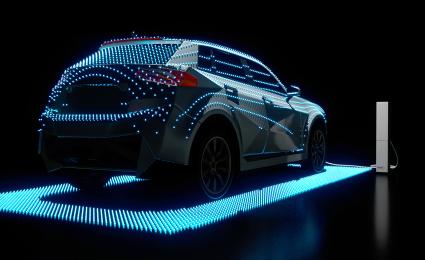Connected services in the automotive sector may have flopped a decade ago, but things have changed. Find out why and what the future holds in our new report


Explaining software-defined vehicles
How software-defined vehicles are reshaping the automotive value chain
Software-defined vehicles (SDVs) are reshaping the automotive industry — not just in terms of technology, but in how value is created, delivered, and sustained. While the term “SDV” often evokes images of autonomous driving or futuristic infotainment systems, the real transformation lies deeper: in the decoupling of hardware and software and changes in the automotive value chain that it triggers.
_image_caption_none.jpg?v=1585783)
What is an SDV — And what it is not
At its core, a software-defined vehicle is a vehicle whose capabilities can be upgraded or introduced over time through software without changing physical components. This means features, functions, and operations are deployed via over-the-air (OTA) updates, much like smartphones. SDVs are not limited to electric vehicles, nor are they simply rebranded conventional cars with more software. They represent a fundamental architectural shift.
On the contrary, a hardware-centric approach in automotive ties features to dedicated physical components or electronic control units (ECUs), meaning adding new capabilities often requires installing new hardware – like adding adaptive cruise control via extra modules. However, a software-centric approach decouples functionality from specific hardware, using centralized computing, OTA updates, and modular software to deliver new features without physical changes. For example, Tesla enabled Full Self-Driving (FSD) through an OTA update.
Why SDVs should matter to business leaders
The business rationale behind SDVs is compelling. Initially, the industry focused on new revenue streams — subscriptions, feature unlocks, and data monetization – and tried to justify the SDV business case with these new revenues. But the narrative is evolving. Today, the emphasis is on cost optimization and operational efficiency that SDVs unlock.
For OEMs, SDVs reduce hardware complexity and enable software reuse across models. This leads to lower development and integration costs. For fleet operators and consumers, SDVs improve total cost of ownership (TCO) and enable vehicles to stay current long after production.
Moreover, SDVs accelerate feature rollouts. Without the need for hardware changes or full system revalidation, OEMs can deliver innovations faster, enhancing customer satisfaction and competitive agility.

The enablers: Architecture and software strategy
The transition to software-defined vehicles is powered by several key enablers:
- Centralized E/E Architectures: Moving from distributed ECUs to centralized computing reduces complexity and cost.
- High-Performance Computers (HPCs): These serve as the vehicle’s “brains,” enabling advanced applications.
- Modular Software & Microservices: Flexible, scalable software development allows for faster deployment.
In many ways, SDVs mirror the transformation seen in smart devices. Just as smartphones receive regular updates that enhance functionality and user experience, SDVs are designed to evolve over time. This shift allows automakers to treat vehicles as software platforms capable of delivering new features, services, and performance improvements long after the vehicle leaves the factory. It also opens the door to new business models, such as feature subscriptions and data-driven services.
The cost equation: From burnout to breakthrough
Software costs in automotive are skyrocketing. OEMs spent almost €40 billion on software in 2024, up from €26 billion in 2021. If the industry continues on a hardware-centric path, this spend could reach €59 billion by 2030 . However, with a transition to the SDV approach, this number could be reduced to €42 billion — saving €17 billion.
These savings come from shifting spend toward platform and feature development, while reducing costs in integration, testing, and maintenance. For example, SDVs allow for isolated feature testing, reducing time and cost. Freed-up resources can be reinvested into value creation, not just cost-cutting.

SDV maturity is a journey, not a single leap forward
As with many other technological advancements, SDVs are evolving slowly, not in a single, giant leap forward. At Roland Berger we have identified four levels of SDV maturity:
- Level 1: Most light and commercial vehicles currently on the road, with distributed architectures, minimal software and hardware decoupling and limited OTA capabilities.
- Level 2: Current state of many new cars and trucks rolling off assembly lines, featuring domain architectures and limited OTA updatability.
- Level 3: Advanced players – predominantly new battery electric vehicle (BEV) makers – embracing strong SDV principles, modular software, and early zonal architectures.
- Level 4: Best-practice SDVs with highly centralized computing, optimized zonal architectures and full OTA capabilities, similar to a smartphone.
It’s important to note that these levels are about SDV maturity (readiness), not autonomous driving capabilities, and are not to be confused with SAE autonomy levels.
As OEMs and Suppliers move from Level 1 to Level 4, vehicles become less hardware-dependent and more defined by their software, organizations evolve to reflect SDV principles, and vehicle electronics architectures get more centralized. Currently, most OEMs operate at Level 2, but leaders are moving toward Level 4 by 2030. Achieving this requires not only technological upgrades but also organizational transformation – often the bigger challenge and one of the main reasons for some of the failed SDV transformation attempts.

SDVs are disrupting the automotive electronics value chain
The rise of SDVs has begun to reshape the competitive landscape for automotive electronics suppliers. Traditionally, Tier-1 suppliers held a strong position, managing full system integration while OEMs focused on vehicle-level integration. But, that model is changing fast: Semiconductor companies are moving up the value chain, influencing software architectures and features; OEMs are in-housing software development and sourcing directly, reducing reliance on Tier-1s; Tech giants are entering the space with platforms like Google Automotive Services; and, contract manufacturers are challenging traditional hardware roles.
How these changes are impacting Tier-1 Suppliers
For Tier-1 suppliers, the shift to SDVs brings significant challenges. Cost transparency is increasing as OEMs develop detailed should-cost models for hardware and software, reducing the ability to hide margins. At the same time, content per vehicle is shrinking because sourcing is becoming more disaggregated, eroding Tier-1s’ traditional advantage in integrated sourcing. Scale requirements are rising sharply, while domain expertise alone is no longer enough to compete. Adding to the complexity, Tier-1s still hold front-line warranty responsibilities but have less control over software and hardware sourced directly by OEMs, making risk management more difficult. These dynamics are compressing margins – from over 7% EBIT in the traditional model to less than 5% – and forcing Tier-1 suppliers to rethink their strategies to remain competitive in an increasingly fragmented value chain.
However, the pace of disruption varies by supplier domain. For example, advanced driver-assistance systems (ADAS) and infotainment were the first to separate hardware and software which led to major value chain disruptions. Other domains – like comfort, chassis, and powertrain – have not yet felt the same magnitude of change. Tier-1 suppliers must adapt quickly, finding defendable positions in an increasingly fragmented value chain.
The bottom line: SDVs are not just a technological shift – they’re redefining who creates and captures value in automotive electronics.

Organizational alignment: The critical success factor for SDVs
Technology often dominates the SDV conversation, but recent program delays and failures reveal a different root cause: organizational misalignment. Building a successful SDV capability requires more than advanced architectures and software — it demands a clear blueprint for roles, responsibilities, and governance.
At the top of this blueprint sits the SDV strategy team, responsible for setting priorities, managing platform direction, and aligning innovation with business objectives. Supporting this vision, the architecture team acts as a gatekeeper, ensuring consistency across projects and framing new requests before assigning them to feature teams. The DevOps team manages processes and tools, enabling continuous integration and deployment. Meanwhile, the SDV platform team develops the core software and compute hardware, including the operating system, while feature teams own end-to-end delivery within functional domains.
Crucially, vehicle programs remain separate from the SDV platform organization. This separation allows platform-level innovation to progress independently from individual vehicle timelines, preventing architectural decisions from being constrained by short-term program profitability. In practice, this means the SDV core team focuses on scalable solutions, while vehicle programs integrate production-ready software and legacy systems.
Beyond structure, OEMs must embrace continuous development and integration — decoupling software release cycles from vehicle launches. Unlike traditional automotive development, SDVs require an ongoing process where software updates are applied even after start of production (SOP). This approach ensures vehicles remain competitive and future-proof.
Ultimately, SDV success depends on the “trinity” of technology, business case, and organization. If even one of these pillars falters, the initiative risks failure. Technology may be well understood, but without a strong business case and organizational alignment, SDVs cannot deliver their full potential.

SDVs as a business transformation
Software-defined vehicles represent a paradigm shift. They turn cars into platforms — capable of evolving, adapting, and delivering value over time. For decision-makers, the opportunity is clear: embrace SDVs not just as an engineering feat, but as a business transformation.
At Roland Berger, we work closely with automotive leaders to navigate this transition. From defining SDV strategies and assessing architectural readiness to building robust business cases and implementation roadmaps, we help companies unlock the full potential of software-defined mobility. Our cross-functional expertise bridges engineering and business, ensuring that SDV initiatives are not only technically sound but commercially viable.
Sign up for our newsletter and get regular updates on Automotive topics.





